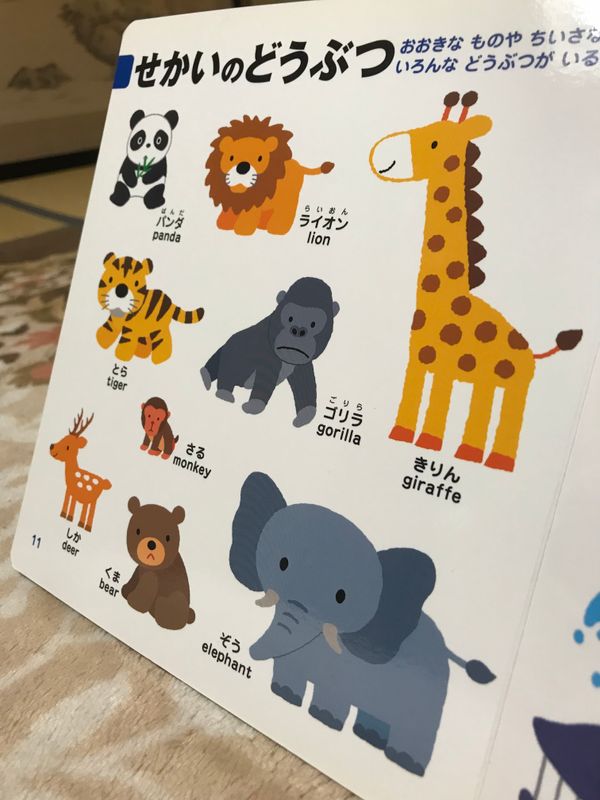Jul 7, 2018
Etymology with a 3-year old
So there I was, doing language practice with my daughter when I encountered a unique feature of Japanese. Take a look at this page and see if there’s anything that might be confusing from the eyes of a 3-year old:

How about this: “Why does Go-ri-ra sound like Gorilla but bear is ku-ma?” That same issue applies to a few other animals on that page. Fortunately, I happened to know the answer thanks to some prior research on the etymology of Japanese words. Allow me to share.
Certainly, Japan had exposure to plenty of wildlife in the thousands of years of its existence prior to its period of industrialization in the latter half of the 1800s. The Japanese people came up with their own names for each of those animals, ranging from monkeys (saru) to sharks (same) to chickens (niwatori). But of course, more animals were introduced to Japan over time. There was a cutoff for the use of Japanese names for newly introduced animals, however, and that was the start of the Meiji period (1868-1912).
Immediately prior to and after the Meiji restoration in 1868, the Japanese government sought to catch up with the western world in technology, government, economy, and other aspects of life. Although some features of western culture had already been introduced well before (tempura and tonkatsu were both adapted from Portuguese cooking techniques), the period between 1868 and 1912 saw an influx of all things western from dress to machinery to words.
Among those words introduced were animal names. The Japanese government made a decision that any new animals introduced to Japan following the Meiji Restoration would simply use a Japanized version of the occidental name, so a Gorilla would just be a Go-ri-ra and a Koala is just a Ko-a-ra.
But if you look again at that photo above, there’s already one exception to that rule: Giraffe is kirin. So the Japanese did maintain a few outliers based on whether the language already had a word suitable for describing the animal. For example, a zebra is a shima-uma, or a striped horse. A polar bear is a shiro-kuma, or a white bear. Those make sense, but what about that giraffe?
Well, have you ever seen the logo for Kirin beer? Kirin is a Chinese dragon that has a long-held place in Japanese art and culture, and when a few Japanese first saw giraffe, the look of the creature reminded them of kirin. So the name stuck and giraffes are just described as an evolved form of Chinese dragons, in a way.
Pretty interesting, right? Language is certainly fascinating, and sometimes it takes sitting down with a 3-year old to pique the questions that help you dig further into the how’s and why’s of a particular language!
Hitting the books once again as a Ph.D. student in Niigata Prefecture. Although I've lived in Japan many years, life as a student in this country is a first.
Blessed Dad. Lucky Husband. Happy Gaijin (most of the time).



1 Comment
edthethe
on Jul 7
I love this so much!!